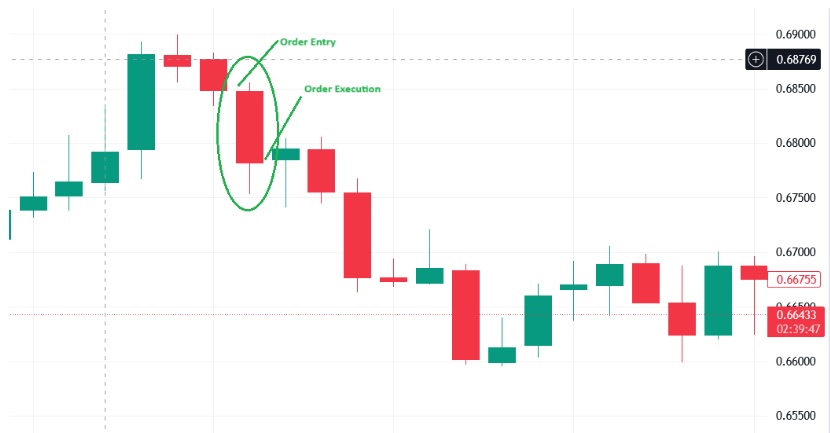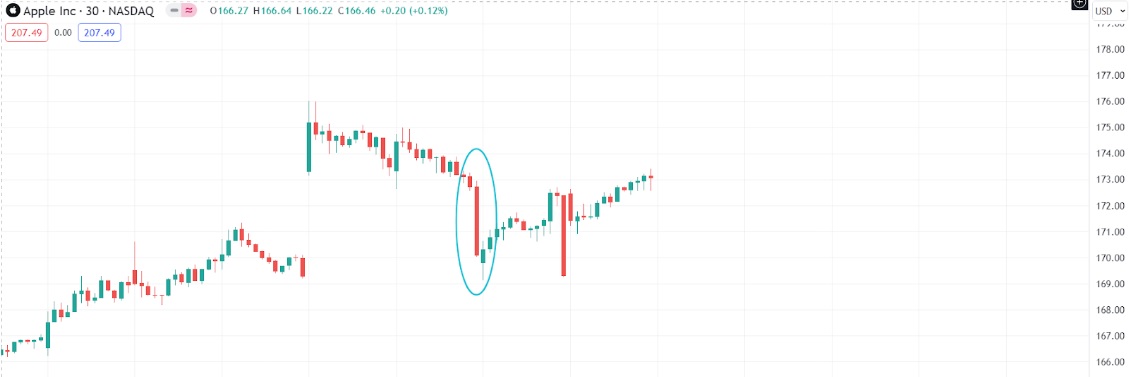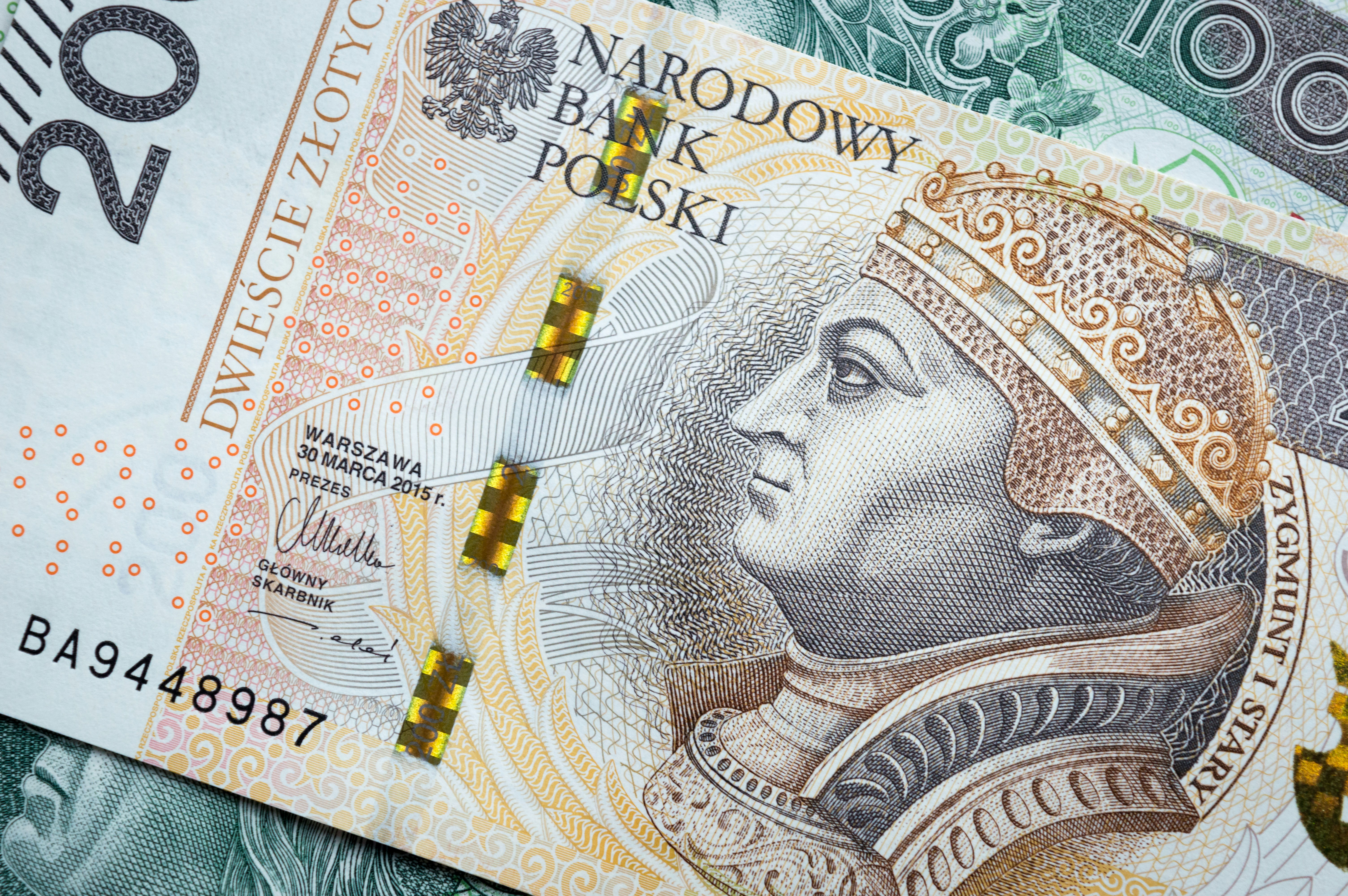Slippage - What It Means in Trading and How to Avoid It

In the world of finance, the term slippage refers to the phenomenon in trading where the execution price of a trade differs from the expected one. This interesting trading alteration can significantly impact investors, either positively by providing unexpected gains (positive slippage), or causing significant losses (negative slippage). But when this phenomenon appear? It mostly occurs either in volatile markets or when liquidity is low, and as a result, it can cause the actual trade price to shift from the desired price to a totally different one.
Thus, it is necessary for every trader to understand how slippage happens and which strategies can help them mitigate its effects and manage their risk improving their market positions. In this article, we will analyze how it works, how to avoid it, and which are examples of slippage to help investors make more informed trading decisions.
Table of Contents
Key Takeaways
What is Slippage in Trading?
How Does Slippage Work?
Example of Slippage
How to Avoid Slippage
Bottom Line
FAQs
Key- Takeaways
-
The difference between the expected and actual trade execution price can often occur in volatile or low-liquidity markets.
- Limit orders help avoid slippage by ensuring trades happen at specified prices, though they may not execute if the market doesn't reach those prices.
- High volatility and low liquidity increase slippage risk; trading during peak hours on major exchanges reduces this risk.
- Using guaranteed stops and limit orders can protect investments and control slippage effects.
- Understand how your trading provider handles slippage to better manage risks and make informed decisions.
What is Slippage in Trading?
The term slippage is used to express the variance between the anticipated trade price and the actual execution price. Traders can meet this phenomenon most frequently in rapidly changing, and extremely unstable markets. This situation can greatly affect the trading results leading to either high profits or significant losses.
Reasons that can lead to slippage are either insufficient liquidity or market volatility, leading to a great alteration of the actual price compared with the desired one. The slippage can be characterized as positive or negative based on the price movement direction and position type. An unfavorable execution price may occur with negative slippage, whereas positive slippage leads to a more favorable price.
For investors, slippage signifies a high-risk state, especially when the market is experiencing periods of high volatility. Traders can reduce slippage risks by utilizing limit orders, which guarantee trades are only conducted at set prices, or guaranteed stops, which end trades at specified levels. Comprehending slippage mechanics and using strategies to control it is essential for effectively navigating the markets.
How Does Slippage Work?
As it is already explained, slippage describes the discrepancy between the expected and the true price. It can be divided into beneficial, detrimental, or indifferent. Market orders are executed at the best available price by exchanges or market makers. Results can differ from the intended price, with deviations being classified as positive, neutral, or negative.
Market prices have the ability to shift rapidly, resulting in slippage when there is a short pause between placing an order and completing a trade. Slippage may happen in all types of marketplaces, but the occurrences differ depending on the particular market. For example, significant trading activity and major occurrences can result in quick changes in prices, impacting the price at which a trade is executed.
Limit orders can help avoid negative slippage by making sure that trades are only completed at the designated price. Nevertheless, there is a chance that the trade may not be executed if the price does not align with the limit. This danger grows with fast changes in the market, reducing the time available to execute trades at the desired price.
Slippage in Forex Trading
Slippage can occur in forex trading when the actual trade price differs from the expected price, usually during high market volatility and low participation. Less commonly traded currency pairs have more slippage compared to popular pairs like EUR/GBP and USD/JPY due to lower liquidity. For example, trading AUD/USD, known for its volatility, can potentially result in slippage.
Order size and market conditions also impact slippage risk. Brokers establish tolerance levels to manage price differences and ensure trades are executed within specified ranges.

Slippage in Stock Trading

Slippage in the stock market is the same idea as in forex. Take Apple stock, for instance, where the bid-ask range is from $170.50 to $170.70. If you place a purchase order expecting the price to rise, slippage might happen.
During the short time it takes to complete your purchase, the asking price could increase to $172.00. This alteration leads to a slip, resulting in your purchase at a lower price. Setting tolerance levels is necessary for managing slippage in order to minimize negative impacts and decrease rejection rates.
Example of Slippage
Let’s consider an example with Tesla stock.
Consider Tesla shares with a bid price pegged at $188.50 and an ask price of $189.00. You resolve to place a market order to procure this stock at the ask price of $189.00. However, you need to keep in mind the potential for the price to escalate to $191.00 before the transaction materializes. This scenario, where the positive slippage occurs, culminates in acquiring the stock at a premium beyond your initial projection.
Conversely, negative slippage can manifest when selling holdings as well. Imagine Tesla's ask price plummets from $188.50 to $186.00. For the seller, this translates to liquidating the stock at a valuation inferior to the anticipated price.
Mitigating slippage is paramount to curtailing unexpected expenditures and optimizing trading efficacy.
How to Avoid Slippage
Slippage occurs when the executed price differs from the expected price. To avoid slippage:
-
Trade markets with low volatility and high liquidity.
- Apply guaranteed stops and limit orders to your positions.
- Find out how your provider treats slippage.
Understanding market trends and finance can help determine its occurrence.
Trade Markets with Low Volatility and High Liquidity
Participating in trading in markets with minimal volatility and abundant liquidity can effectively reduce the likelihood of slippage. Low stability implies prices are unlikely to fluctuate rapidly, whereas strong market liquidity guarantees sufficient participants for trading against you. This blend minimizes the difference between the expected price and the real price of your transactions.
Trade when the market is most active to minimize slippage. Concentrate on prominent stock markets such as NASDAQ and NYSE, where trading volumes are significant and executions are quick. During the opening of the London Stock Exchange, the forex market experiences its peak activity. This will enhance the likelihood of carrying out trades at intended prices.
On the other hand, if you keep positions open outside of regular trading hours or over weekends, slippage is more probable. This may occur when market prices experience quick changes upon reopening as a result of announcements or news events that happen while the market is not operating. These events can greatly change the price at which your trade is filled in relation to the anticipated price.
Apply Guaranteed Stops and Limit Orders to your Positions
Implementing guaranteed stops and limit orders in trading is a strategic approach to managing risk and minimizing slippage effects. Guaranteed stops ensure trades are executed at a specified level without slippage, protecting investments if the market moves unfavorably. On the other hand, limit orders help in controlling slippage during trade entries and exits, ensuring transactions occur at a specified or better price.
By using limit orders, trades can be executed at favorable prices, reducing adverse slippage. Market orders, susceptible to slippage due to sudden price changes, can benefit from limit orders, which establish price limits for trade execution. In volatile market conditions, guaranteed stops offer protection by securing positions, enabling control over trades. Combining guaranteed stops and limit orders enhances trading plans by increasing accuracy and protection, ultimately improving trading outcomes.
Find Out How Your Provider Treats Slippage
Knowing how your provider deals with slippage is vital for successful trading. When you make a market order, fluctuations in price can cause the executed price to differ from the expected price. Certain companies aim to get trades completed at a more favorable price, whereas others opt for executing at the current market price.
Being aware of whether your provider provides guaranteed stops can help prevent slippage and minimize potential losses. Providers might also establish guidelines regarding beneficial slippage. Research how your trading platform handles these situations during unstable periods to effectively manage your positions and make educated choices.
Bottom Line
Slippage is a significant concept in trading, showing the difference between expected and actual trade prices, often seen in volatile or illiquid markets. Investors need to understand and manage it because it could result in unexpected gains or losses. Using limit orders and guaranteed stops can decrease risks by ensuring trades are performed at designated prices or levels. In addition, trading on popular platforms during peak times could reduce slippage.
FAQs
What is Slippage Movement?
As slippage movement, investors understand the unexpected deviation between the expected price and the actual price at which a trade is executed.
What is a 2% Slippage?
Depending on the price movement, a 2% slippage means that the price is either higher or lower than expected.
Is Slippage Illegal?
Slippage is a common occurrence in financial markets and is not considered illegal.
How to Calculate Slippage?
To determine slippage, you subtract the expected price from the executed price, divide by the expected price, and then multiply by 100 to obtain a percentage.


